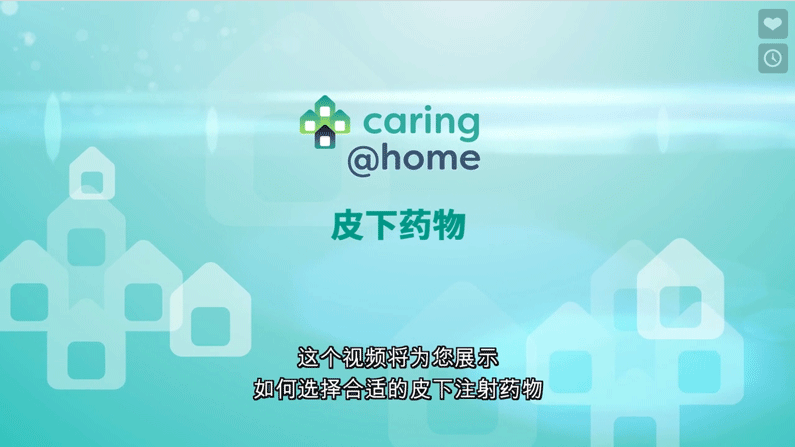Published: 03 December 2024
Transcript
[Music plays]
[Text on screen] caring@home
>>Narrator (female voice over): In this video, you will be shown how to select the right subcutaneous medicine for each particular breakthrough symptom that needs treating, so you can help keep the person as comfortable as possible.
You will also be shown how to complete the medicines diary. All the medicines you need will have been prescribed by your doctor or nurse practitioner.
You'll need to get the medicines from your local chemist. Sometimes medicines are prescribed that are not needed straight away. This is okay. It's what is known as anticipatory prescribing, or just in case prescribing. It means that if you suddenly need the medicine, it will already be in your house. Your nurse will advise you on the best way to make sure you always have enough medicine in the house.
This will include checking your stock of medicines each day and telling your local pharmacist if you are running low. Your nurse will tell you which particular medicine to use for each breakthrough symptom based on the doctor's or nurse practitioner's orders. Subcutaneous medicine is drawn up into a syringe from an ampule.
Your nurse may do this for you and label the syringe for you to store in your fridge, or your nurse may teach you how to draw up the medicine. In either case, for safety, each syringe with medicine in it must be labelled correctly. The label has both the name of the symptom being treated and the medicine used to treat it printed on it.
Once you have identified the symptom that the person is experiencing, you can select the syringe labelled with the medicine used to treat that symptom. It is essential that you read the label on the syringe before giving any subcutaneous medicine. As a backup, you'll be able to use a colour coded system to help you safely match the right medicine for a particular symptom.
The syringe labels are colour coded and there is a colour coded medicines chart for your fridge. Now let's have a look at the medicines diary. This diary is really important as it allows you to keep track of all the information about the subcutaneous medicines that you have given. It also allows communication between you and your healthcare team about the medicines used.
You will record the date, followed by the time the medicine was given, the name of the medicine, The dose of the medicine, the reason for giving the medicine, that is, what symptom is being treated and the before and about 20 minutes after symptom ratings. There is also a space to make a note of anything that you consider to be important about the person or the medicine given.
Please note, it is important that you write in the details for each medicine given. If you have any concerns at all when selecting a medicine for a breakthrough symptom or filling out the medicines diary, contact your nurse or doctor for advice.
[Text on screen] caring@home
[Music ends]
End of transcript

- Audience General public
- FormatVideo
- Language简体中文 / Chinese (Simplified)
- Last updated03 December 2024
